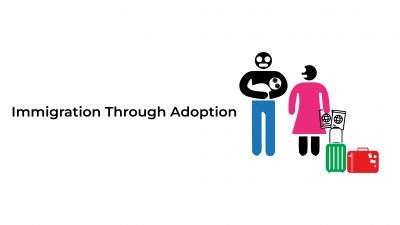
Across the globe, it has been commonly observed that couples who don’t have their children are forced to expand their family through intercountry adoption for a loving home and family.
Intercountry adoption refers to adopting a child from another country and bringing him/her to the United States. Once the couple decides to adopt a child, they are supposed to move forward to the USCIS to avail the option of immigration adoption. Although there aren’t any specific visas available for adopted immigrants, few possibilities still exist to bring a child from another country to the United States.
So, let’s take a look at U.S. adoption immigration processes;
Hague Process
First of all, the Hague process is an international legal process to protect the fundamental rights and responsibilities of adopted children, adoptive parents, and birth parents in the whole process of intercountry adoption. This process is specially designed for U.S. citizens who are intended to adopt a child from the Hauge qualified countries.
Following are the eligibility criteria for the adoption of a child in the United States;
- Adoptive parents must have U.S. citizenship to avail the basic facilitates of the immigration adoption process.
- Adoptive parents must reside in the United States continuously.
- Adoptive parents must be financially stable to afford the basic expenses of an adopted child.
- Adoptive parents must have an excellent clean residential facility.
- In case of a married couple, both spouses must be willing to adopt a child from another country.
- In case of unmarried, you must be 24-years old to file the Form (I-800A) for child adoption.
- Adoptive parents must provide complete parental care to the adopted child.
These are specific guidelines that need to follow for the Hague process given as below;
- Firstly, choose a Hague authorized Adoption Service Provider (ASP).
- Get a home study from the authorized person for the Hauge adoption process.
- Apply USCIS to adopt a child from another country.
- Once USCIS approves your adoption application, the next step is to work with your adoption service provider (ASP) to get to know about the basic requirements to adopt a child from a foreign country because the eligibility criteria vary for different countries around the globe.
- Adopt a child from another country as a full custodian.
- Get an immigrant visa for the adopted child and bring him/her to the United States.
Note: This whole process will approximately take 6 months to 1 year.
The Orphan Process
The term ‘orphan’ refers to a child deprived of parents (mother and father both) because of death, disappearance, or any other unknown reason, or a child who has a single surviving parent doesn’t have enough resources to take care of and is released by parents for adoption. This whole process of adopting an orphan child from another country is called Orphan Process.
Following are the requirements to adopt an orphan child in the United States;
- If you are married, you must be 25 years or older to adopt an orphan child.
- For a married couple, it is required that both spouses must be willing to adopt an orphan child from another country.
- You must have enough resources to take care of an adopted child.
- You are required to ensure that the child you are going to adopt is recognized as an orphan in United States immigration law.
As per the definition of the ‘adopted child’ in the Immigration and Nationality Act, you must file an orphan petition before the 16th or 18th birthday of that child.
Family-Based Petitions
The last one is the family-based petition process in which you can bring an individual to the United States to whom you considered Son or Daughter rather than legal adoption process to become a custodian. You can use this option for your nephews or any other sibling to bring them to the United States.
The application process and eligibility criteria for all types of adoption are almost similar in nature except few of the differences mentioned below;
- In Hauge and Orphan process, U.S. citizenship is compulsory for the adoptive parents, while Lawful permanent residents can also use the Family-based petition process.
- The family-based petition process is usually unavailable for those countries which are listed in the Hauge eligible countries.
- The petitioner of adoptive parents is required to submit the evidence of child adoption from another country. Moreover, they have to satisfy the two-year legal custody of that child and their joint residence to get the immigration benefits.
References:
- U.S. Immigration Through Intercountry Adoption, August 19, 2021. Available from: https://youtu.be/Kwn_8JMg1zU [30 January 2022].
- Ella Bergquist, How to Bring an Adopted Child to the U.S.U.S.: Immigration Through Adoption, August 21, 2018. Available from:
- https://www.visaplace.com/blog-immigration-law/us-immigration-through-adoption/ [30 January 2022].
- Merriam Webster, orphan, Available from: https://www.merriam-webster.com/dictionary/orphan [January 30, 2022].

